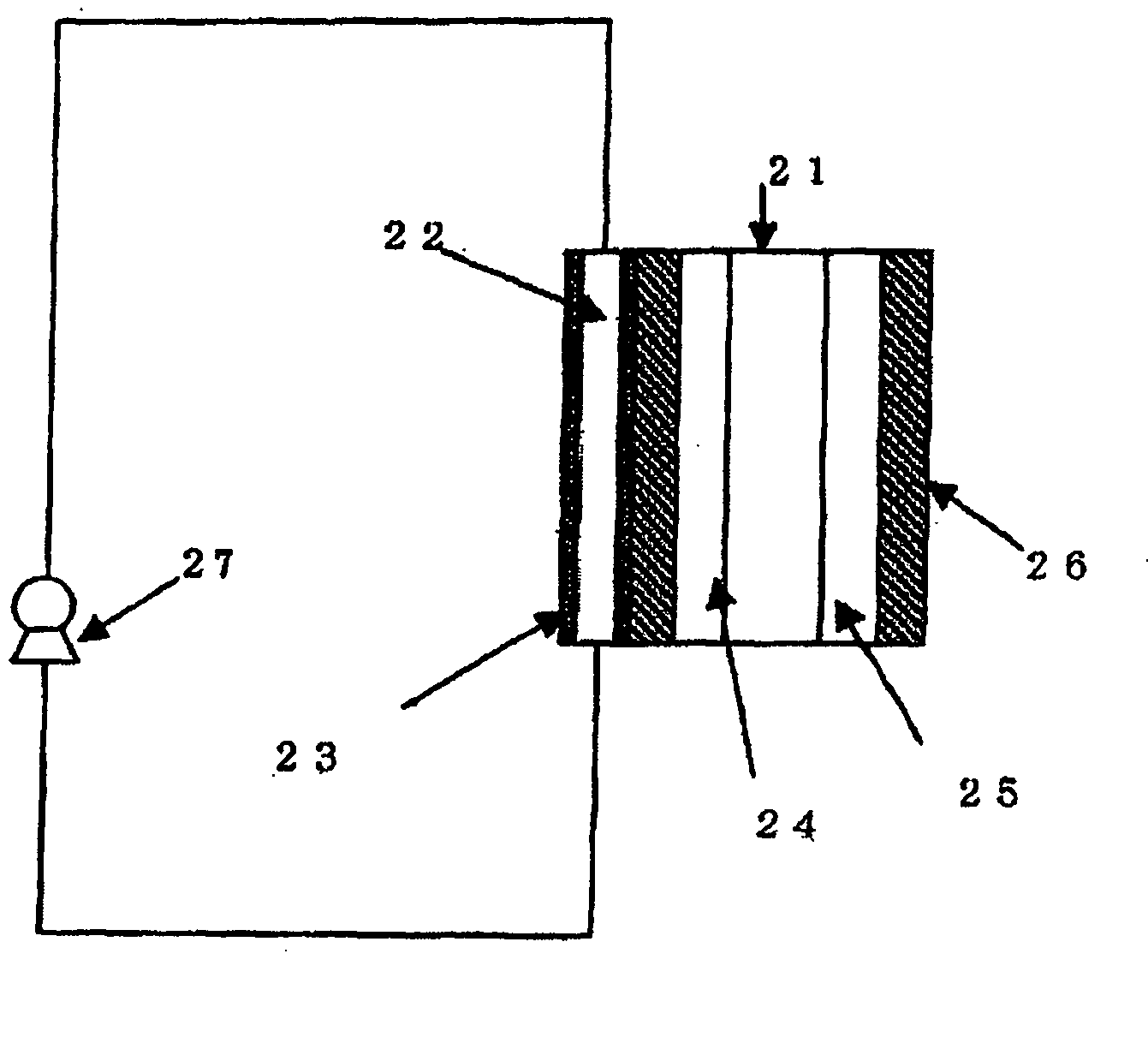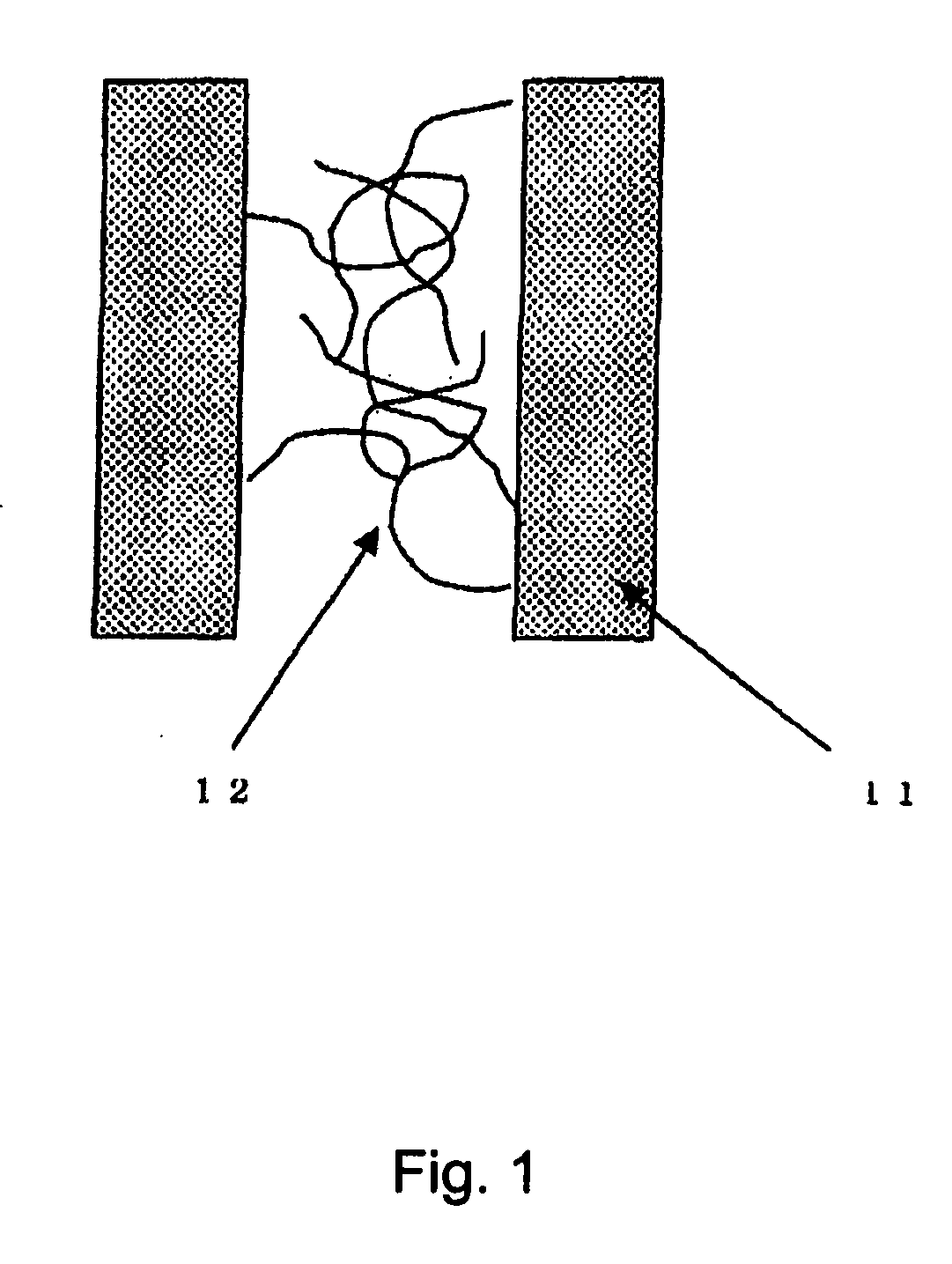Fuel cell apparatus
a fuel cell and apparatus technology, applied in the field of fuel cells, can solve the problems of clogging fuel and air passages, affecting the rated output of the fuel cell, so as to reduce the potential for water freezing in the channel
- Summary
- Abstract
- Description
- Claims
- Application Information
AI Technical Summary
Benefits of technology
Problems solved by technology
Method used
Image
Examples
example 1
[0037] In this example, a fuel cell stack having cells with a basic structure shown in FIG. 2 was used. The cells differ in that one end of N-isopropyl acrylamide is connected to the surface of the pure water channel rather than PMMA. The N-isopropyl acrylamide was attached to the channel wall by plasma polymerization. This fuel cell stack was operated by the procedure shown in FIG. 6. After startup at room temperature, the cell is operated at about 70° C., and is subsequently shut down. After shutdown, the atmospheric temperature surrounding the fuel cell is lowered to −20° C. The N-isopropyl acrylamide undergoes volume phase transition at about 40° C., and expands in the pure water channel. After maintaining the cell for 8 hours at −20° C., dried hydrogen gas and air at 40° C. were caused to flow, which caused the cell to start generating electricity again. At the stage where the fuel cell temperature reaches 40° C., pure water starts to circulate. Due to the rise in fuel cell tem...
example 2
[0038] In this example, a fuel cell having the basic cell structure as shown in FIG. 3 was used. In addition to the implementation of example 1, three-way valve 30, three-way valve 31 and blower 32 are set in the coolant loop. Pressure gauge 34 and pressure gauge 36 are set to control pressure control valve 33 and pressure control valve 35 through pressure controller 37. During operating the fuel cell system, three-way vale 30 and three-way valve 31 are set as follows to make a loop.
Three-way valve 30Three-way valve 31Line A: OpenedLine D: OpenedLine B: OpenedLine E: OpenedLine C: ClosedLine F: Closed
[0039] First, three-way vale 30 and three-way valve 31 are set as follows to drain water from the fuel cell stack when the fuel cell system is shut down.
Three-way valve 30Three-way valve 31Line A: OpenedLine D: OpenedLine B: ClosedLine E: ClosedLine C: OpenedLine F: Opened
[0040] Secondly, blower 32 starts to drain water from fuel cell stack. Blower 32 stops after a predetermined tim...
PUM
 Login to View More
Login to View More Abstract
Description
Claims
Application Information
 Login to View More
Login to View More - R&D
- Intellectual Property
- Life Sciences
- Materials
- Tech Scout
- Unparalleled Data Quality
- Higher Quality Content
- 60% Fewer Hallucinations
Browse by: Latest US Patents, China's latest patents, Technical Efficacy Thesaurus, Application Domain, Technology Topic, Popular Technical Reports.
© 2025 PatSnap. All rights reserved.Legal|Privacy policy|Modern Slavery Act Transparency Statement|Sitemap|About US| Contact US: help@patsnap.com



